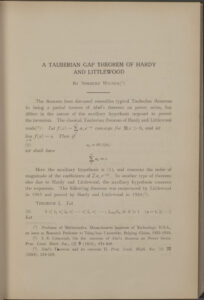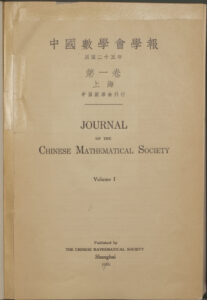It seems like you can’t turn on the TV or open a newspaper without hearing another report or reading another editorial about the rise of China. The country’s increasingly prominent position on the world political stage and its economy’s dazzling growth have convinced many observers that China is on track to becoming the world’s next superpower. MIT has certainly taken notice, and the Institute’s Greater China Global Initiative outlines curriculum changes, increased collaboration, and other proposed actions in recognition of this development.
In the realms of science and technology, it has long been clear that China produces a great many top-notch students and researchers. Here at MIT, hundreds of graduate students from China enroll every year, and you might be surprised to know that this is not just a 20th- and 21st-century phenomenon. 1876 saw the arrival of the “Chinese 100” – scholars sent to MIT to learn about chemistry, mining, mechanical engineering, and mathematics – and the first Chinese MIT graduates earned their diplomas a few years later.

An early example of an MIT exchange with China occurred in 1935-36, when the mathematician Norbert Wiener, one of MIT’s superstars (and that’s saying something!), spent a year as Research Professor of Mathematics at National Tsing Hua University in Beijing, then called Peking. After the 1911 revolution brought about the new Republic of China, an increased number of students were sent to Western universities for training. By the 1930s, many of these students had returned to China with new methods; modern mathematical research became better established, and China was on its way to becoming a serious participant in the international mathematics community.
In 1935, the Chinese Mathematical Society was founded, and in 1936, the Journal of the Chinese Mathematical Society published its first issue under a joint subsidy from the Academica Sininca, the National Academy of Peiping, the National University of Peking, and the National Tsing Hua University.
Wiener’s “A Tauberian Gap Theorem of Hardy and Littlewood” is one of nine papers (written in English and German) that appear in the journal’s first issue; the other eight papers were written by Chinese mathematicians. The journal ran until 1940, and in 1951 (after a gap perhaps explained by World War II and the Chinese Civil War), the Society began publishing Acta Mathematica Sinica, by which time China had become the People’s Republic.

